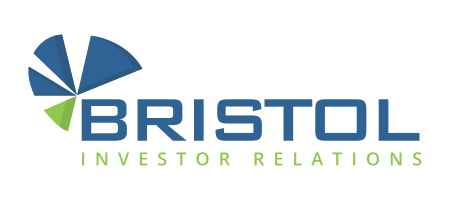Digital media and IR marketing strategy
Digital media and IR marketing strategy

Investor relations is of high importance as a communications tool in the micro and small cap public company’s marketing strategy. Most widely used as a briefing method for current shareholders and followers, effective investor relations is also used to target new professional audiences which serves to uphold and increase awareness of the company. Businesses that want to maintain brand recognition in the public markets continue to leverage IR. The communications space is an ever changing one and new and relevant mediums evolve that companies can use to effectively spread their message. Companies that want to gain the most value from their use of investor relations need to recognize and use all relevant mediums at their disposal. In this feature, we will discuss the current mix of IR communications tools, as well as emerging mediums that all public companies need to distinguish for use as part of their public markets communications strategy.
Using various communication channels allows companies to attract a national and global audience to their stock. This group typically includes current shareholders, both individual investors and professional funds, new prospective buyers, analysts, investment bankers, media, news outlets, financial writers and many others. As a result, companies using all relevant channels become known within these communities, which often positively reflects on their public market performance. The corporate messaging is strong and the business strategy is well communicated by the company.
Press releases, earnings calls, investor PowerPoint decks, fact sheets and corporate websites are a few of the key investor relations touch points for the investor community. Nowadays investors have access and consume data not just from newspapers and websites but numerous other channels. With that being said, companies need to consider embracing new channels and technologies which might be relevant to them in helping to communicate the IR message to a wider audience. The digital media space is an area that continues to be accepted by the investment community as a source of valid information. For companies to maximize their reach they cannot ignore this. Every business is unique and therefore will have its own method of tailoring its messaging across the channels and to its relevant audience. Some prominent tools to increase reach is the use of Twitter, LinkedIn, YouTube, Instagram, Facebook and financial blogs. For some companies these channels might prove useful however for others largely irrelevant.
The users of social media are no longer a younger and distant generation, but increasingly relevant professional stakeholders that would typically follow the company and consume news from multiple sources. At a buyside fund that has their own digital channels, it takes just one professional investor (who is either new or met with the company or followed them through news releases and webinars) to read materials in the digital space and share it with other relevant members of his team or industry at the click of a button. This can serve to influence peers or speed some of their investment decisions.
Short Tweets for instance can better serve a buyside investor who is inundated by information and would follow a company for key-sentenced updates before clicking further to view their quarterly financials or business developments. In another case, a public company that can share images across the Instagram platform that tell or enhance a narrative will do this to complement and sometimes augment the content of its press release. Stock Twits is another important social platform that often crosses paths with Twitter. It is the social media hub for the investment community who people trade tips, ideas and comments on companies and their news and performance.
Companies will use these platforms differently and for different reasons. For example, a mining company can post an image of a new discovery and a technology company of a new product added to their product line. The use of digital channels by professional investors has grown exponentially over the years and will continue to rise, not only due to shifting investor demographics, but particularly because of the ease through which the content is visible and accessible. The public company that uses these tools will ensure that its reach is maximized and that its professional audience is constantly engaged when they want to access content.
There are other benefits for public companies in adding digital channels to their investor communications strategy such as the ability to disseminate information quickly to a large audience and the second to measure the results and impact through analytics. The number of followers, views, clicks, comments or history on social media, how users have communicated with the company in the past – whether they met the company or listened to their presentations – all this adds more layers for management to understand the level of investor engagement, and adds to improving communication with their audience. For professional investors that increasingly use these channels, additional communication with the company reinforces the business, its message, and retains its memory with the stakeholder.
For a small public company to maximize its value, it is very important that its messaging, corporate updates, and information flows through all relevant channels. Traditional IR methods, such as speaking to investors, sending emails, attending conferences, roadshows, and webinars, are set in stone and cannot be overlooked. However, where applicable, incorporating digital channels will complement these efforts. It will enhance content, extend lines of communication and keep investors in the loop in real time. For management, it will let them see who is reading this digital content, how they are reading it, from which geographic location (useful to inform future investor outreach) and when they are reading it, all of which creates a better understanding of the audience.
In today’s world, embracing digital media and the plethora of communication channels available to you and your company can be beneficial. When used correctly it can disseminate, inform and reach new audiences for your message and information. Stay open to adopting new communications channels, especially those of digital media when forming your Investor Relations communications strategy.
Sources:
Blendermedia
Business 2 community
NIRI
